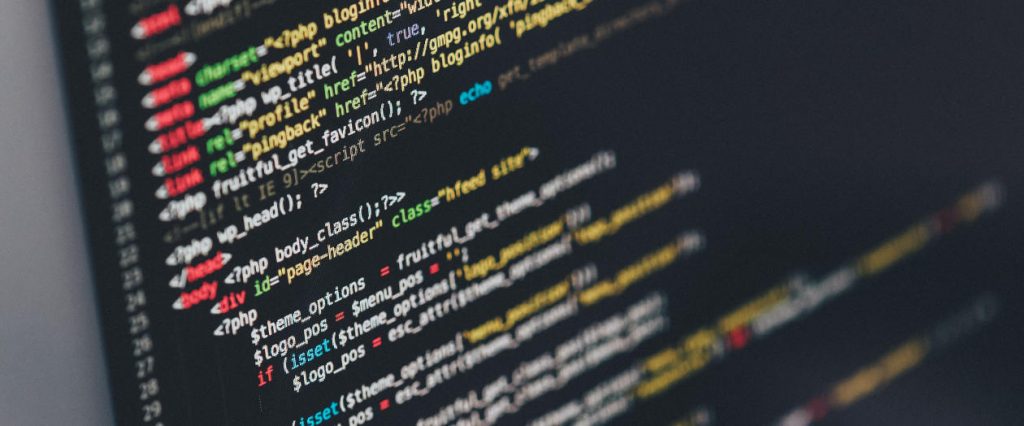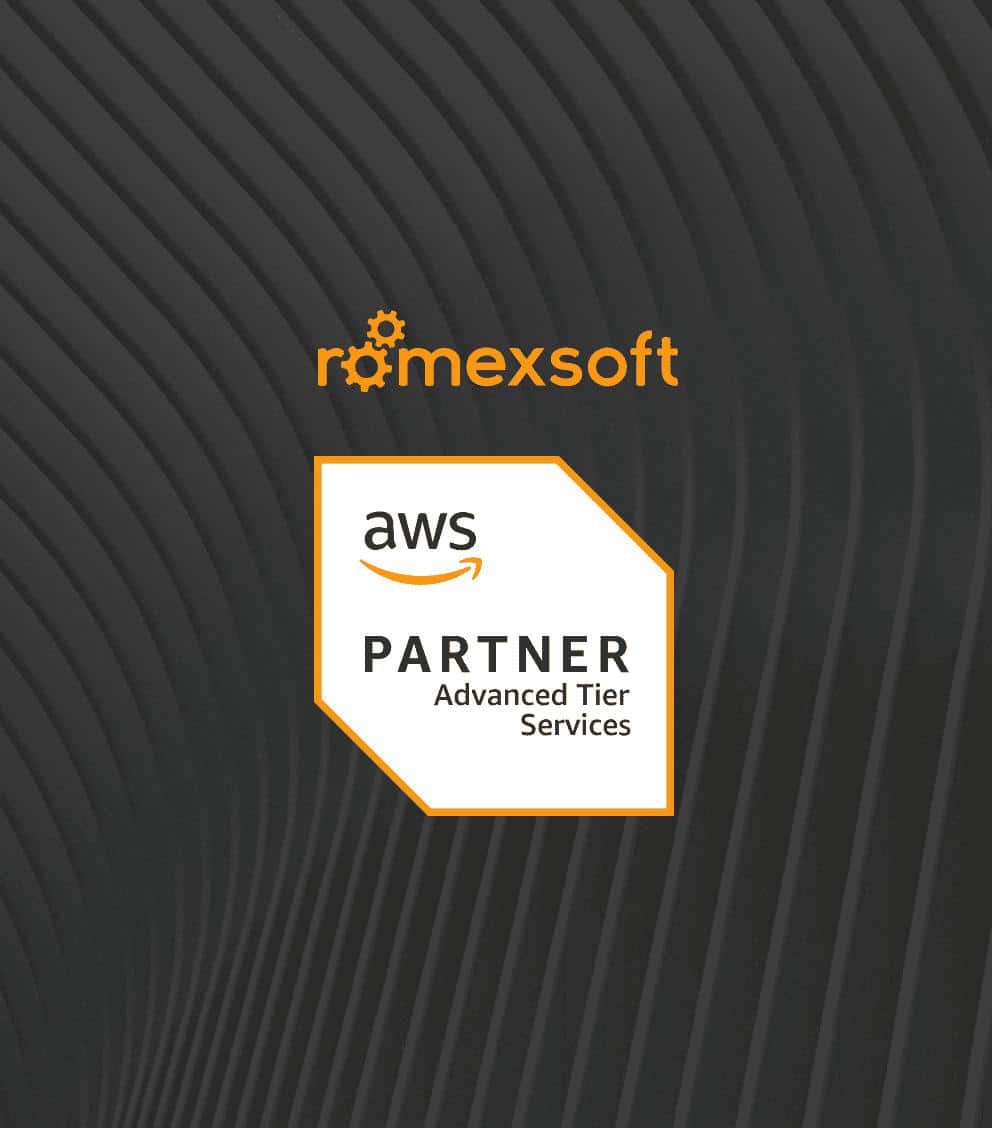Observability vs Monitoring: What is the Difference and Which to Choose
Reliable applications and seamless user experiences that distributed architectures promise entail a heavy reliance on observability and monitoring tools crucial for maintaining the performance and stability of complex systems.
The blog highlights:
- what are monitoring and observability
- what are the similarities and differences
- which one and when to choose
- how to choose the right tool
- future trends

Table of Contents
Being after reliable applications with satisfying user experience, organizations have become increasingly dependent on distributed architectures. The shift to distributed systems has made two concepts essential for ensuring that these complex setups function effectively and efficiently: observability and monitoring.
Despite being frequently mentioned in the same context, they are essentially different when it comes to their goals and approaches. The main distinction lies in the scope of insight and depth of analysis they provide: monitoring delivers information about the current situation through tracking predefined metrics, while observability offers a deeper understanding of system behavior and core issues.
Modern DevOps strategies require clear knowledge of these differences since observability and monitoring provide cheatsheets to system performance, reliability, and security, and each of the methods targets unique aspects of IT operations. This article provides a comprehensive overview of the connection between observability and monitoring, their key distinctions, and their complementary roles in enhancing business results.
Table of Contents
What is Monitoring
It is an approach that involves tracking the system’s health and application performance to detect and address problems in due time. It is an approach that encompasses multiple functions: collecting, analyzing, and visualizing predefined data points (metrics, logs, and traces). What this method primarily focuses on is tracking specific metrics to detect anomalies or failures as they occur.
The approach is designed to:
- Detect deviations from predefined metrics to guarantee standards adherence.
- Enable prompt issue detection and resolution through insights and warnings.
- Optimize resources and enhance system performance by supervising long-term trends.
As can be inferred, monitoring is an indispensable approach for stable IT operations, as it provides teams with situational awareness and ensures swift responses to potential issues.
What is Observability
As a method, it provides assessment and analysis of a system’s internal state through the data it produces, including metrics, logs, and traces. Unlike monitoring, it evaluates all available data in order to deliver more comprehensive insights regarding the behavior within the system.
Observability, as a tool for system performance management, aims to:
- Ensure swift detection and extensive investigation of system issues.
- Set clear performance goals, such as Key Performance Indicators (KPIs) and Service Level Objectives (SLOs), and monitor the progress.
- Enable constant improvements in system performance and UX.
In comparison to monitoring, this set of tools provides a more holistic insight into distributed systems, a feature that helps teams identify the cause of issues and improve operations by using practical knowledge to implement the required measures.
Why Do Observability and Monitoring Seem Similar
Indeed, the difference between observability and monitoring can be puzzling. The two concepts are often confused since both are indispensable when it comes to maintaining the health, performance, and reliability of IT systems. What further contributes to this confusion is the considerable overlap in their processes, tools, and goals. Both tools also share working methods – gathering and analyzing key system data (like logs, metrics, and traces) to ensure smooth system operation. They share data sources that enable performing various operations (detecting issues, tracking performance, and diagnosing problems), a resemblance that makes the difference between observability and monitoring all the more vague.
What adds up to similarity is the tools both methods leverage. Platforms, such as Amazon CloudWatch or Grafana, help teams with multiple tasks (such as visualizing data, generating alerts, and investigating issues) by offering features for both monitoring and observability, all through a single interface. In modern DevOps practices, the approaches are often deployed together, particularly in complex, distributed systems and cloud environments that prioritize system reliability.
Speaking of ultimately enhanced characteristics, the multiple correspondences and overlaps of monitoring and observability combine to create a holistic approach to understanding and maintaining system performance.
Difference Between Observability and Monitoring
As we have settled, observability and monitoring are two distinct data-based processes, although they mostly go hand in hand in DevOps to maintain and manage the health and performance of distributed microservice architectures and their infrastructure, complex systems that operate by exchanging data between tens to hundreds or thousands of different components. Read on to spot the major distinctions between the two.
How they work: observability vs monitoring
Monitoring is a practice that has existed since the early days of computing. By collecting system data, this tool generates reports and alerts on errors, faults, or anomalous data values – all with the aim of assessing the system’s performance and confirming that it operates as expected.
A typical example of monitoring at play is tracking the duration of an application release deployment: if the deployment time exceeds the expected range, these tools can send alerts to notify users that there may be an issue. However, DevOps monitoring encompasses not only the deployment but all the stages of the full software development lifecycle, while its segment, application performance monitoring (APM), targets applications running in production with emphasis on metrics that apply to user experience.
Observability, on the other hand, operates on a larger scale: it provides insights into system interactions as well as additional situational and historical data. Its all-encompassing deeper view allows teams to gain a clear understanding of the primary cause of monitoring alerts, and analyze errors that multi-component interactions might cause.
Observability tools allow you to perform multiple tasks, such as:
- debugging distributed application architecture-based systems;
- observing the health of the entire system and the interactions between its components as they occur;
- mapping an entire interconnected system with all its dependencies, and real-time interactions.
Focus
Since monitoring ensures the system’s expected performance by assessing predefined metrics or events, its features provide teams with information about the nature and timing of a certain issue, as well as trigger alerts/reports to address detected errors.
In contrast, observability goes beyond simply tracking data. Its framework analyzes metrics, logs, and traces in order to understand the internal state and behavior of the system and deliver a more comprehensive insight into the underlying cause of the issue and the process behind it. This approach allows for root cause analysis and deeper insights into the system’s performance, while also detecting unknown or unexpected issues.
System Involved
When it comes to system assessment, monitoring has a limited scope: it focuses on standalone systems or individual components and tracks their performance according to expectations, which sometimes leads to the isolation of individual systems.
Meanwhile, a wider perspective of observability helps teams detect issues caused by interactions between components by analyzing multiple, interconnected systems in distributed environments, such as microservices or multi-cloud architectures.
Traceability
Monitoring collects specific data, such as predefined metrics and logs, from individual parts of a system but doesn’t provide insight into how components interact with each other or track the connections between them.
Observability collects and analyzes data across the entire system to provide an in-depth understanding of the interconnections between components. This approach involves distributed tracing, a feature that tracks requests through interconnected services to detect bottlenecks or flow-related issues.
System Error Findings
Monitoring uses predefined metrics and alerts to detect anomalies or unusual behaviors in the system, determining the time and location of the issue.
The holistic outlook of observability delves deeper into the underlying causes of those errors. Instead of pinpointing when and where an issue occurs, it investigates the reason and the process behind it, which allows teams to determine the role of interconnected components in the issue and provides solutions.
Anomalies
In the context of identifying unusual behavior, like performance degradation or resource bottlenecks, monitoring highlights issues by comparing the defined standards with the real-time data.
What observability does is take the issue analysis further. This approach includes investigating the causes of anomalies, particularly in distributed systems, which allows teams to gain a more thorough understanding of the issues, including those that stem from interactions across multiple components.
Cause and Effect
Monitoring detects the negative consequences of system changes – like increased latency or decreased throughput – and raises alerts accordingly.
Observability, on the other hand, offers insight into the root cause of those effects. It identifies the exact component or interaction that caused the problem and delivers valuable data to address issues and prevent their recurrence.
System Interactions
Monitoring gathers data from each part of a system separately without further consideration of how these components interact, therefore making the interconnections within a system difficult to understand.
In this regard, observability offers a comprehensive view of the connections and dependencies between different parts of the system. This helps teams fully understand the causes of issues in distributed environments and address them promptly.
Comparison Table
| Monitoring | Observability | |
|---|---|---|
| What is it? | Assessment and reports on predefined metrics within a specific time frame (e.g., CPU utilization, memory usage, request rates). | Gathering metrics, events, logs, and traces across the entire stack and analyzing them to understand system state and health in context. |
| Main Focus | Identification of system anomalies by collecting and visualizing time-series data. | Comprehensive view and analysis of root causes behind anomalous system behavior. |
| Systems Involved | Standalone systems and their isolated components. | Multiple, interconnected systems in distributed architectures. |
| Traceability | Restricted to the outer parts of the system. | Extensive traceability with distributed tracing across interconnected services. |
| System Error Findings | The nature and timing of system issues. | The reason and the process behind system issues. |
| Anomalies | Identification of unusual spikes and drops in performance metrics. | Deeper analysis of the causes of anomalies across complex components. |
| Cause and Effect | Assessment of system health concerns (cause → effect). | Detailed overview of root causes and optimal resolutions. |
| System Interactions | Supervision of individual workflows. | Analysis of system relationships and detection of issues among them. |
Observability vs. Monitoring: Which One Is to Choose
Where your choice leans towards depends on your organization’s requirements, system architecture, and operational priorities. Despite their multiple similarities, the decision of which one to focus on must be based on the specific situation or environment in which the two approaches are used.
When to Prioritize Monitoring
The approach is most appropriate for:
- Stable, Predictable Systems
Infrastructures that have predictable behaviors and common failure patterns can be effectively managed using predefined metrics and alerts that monitor the system’s health. - Real-Time Alerts
Monitoring will ensure that teams address the issues promptly with the help of immediate notifications about key metrics or thresholds, such as CPU utilization or memory usage. - Surface-level issue identification
Monitoring tools help detect major issues, like downtime or performance slowdowns, as well as offer useful insights for quick resolution.
When to Focus on Observability
The method proves to be the best match for:
- Dynamic, Distributed Systems
Complex systems of microservices and hybrid cloud environments require a deeper understanding of interactions. - Unforeseen Circumstances
For systems with unknown failure modes, observability provides the toolset to gain knowledge of offers the tools to investigate the reason and the process behind issues. - Preventive Improvement
By significantly simplifying the analysis of issue causes and providing continuous performance improvements, the approach enables proactive problem-solving, which in the end, minimizes downtime and maximizes reliability.
A Combined Approach
Given the inherent features of both, organizations usually benefit the most from combining them. Typically, the two methods are applied as follows:
- monitoring is used to set the foundation of metrics and alerts for situational awareness;
- observability expands on monitoring and provides comprehensive analysis and proactive issue prevention in complex environments.
One can adopt a strategy that balances monitoring’s simplicity with observability’s depth and results in both operational efficiency and system resilience. A step towards implementing it is assessing your current and future needs with DevOps consulting.
How Observability and Monitoring Can Work Together
With their complementary strengths, both approaches form an all-embracing framework for optimizing system management.
Monitoring’s Role
It provides a foundational layer of system oversight, as it collects and displays key system data (metrics, logs, and alerts) to detect unusual behavior, assess performance, ensure system components operate as expected, and provide situational awareness.
Observability’s Contribution
Going beyond monitoring by adding context to the collected data, it helps teams understand the interconnections in the system and the root causes of issues. Observability provides a deep analysis of the relationships between system components to determine the reason behind anomalies and resolve problems effectively.
The Benefits to Gain
- Proactive and Reactive Management
With problems identified in real-time, they become understood and eventually preventable with observability. - End-to-End Visibility
Insight into isolated metrics is complemented by a deeper understanding of the interconnections between components in complex systems. - Operational Excellence
Their combined features allow teams to identify and promptly tackle issues in both predictable and dynamic environments.
Utilizing monitoring and observability in tandem provides organizations with a thorough comprehension of system performance and what it takes to maintain system reliability and ensure continuous improvement.
How to Choose the Right AWS Tool for Observability and Monitoring
For effective system performance management, your organization needs a tool that balances functionality, ease of use, and scalability. Consider the following breakdown of key factors to keep in mind:
Data Collection and Integration
The tools you choose must collect and unify data (logs, metrics, traces) from diverse sources across various environments, such as on-premises, cloud, and hybrid. CloudWatch, AWS X-Ray, and Distro for OpenTelemetry are excellent solutions for integrating telemetry data from diverse sources, including both native and third-party systems across your IT ecosystem. These tools offer a unified view of its health and performance.
Scalability and Performance
The tools you choose must be able to handle increasing volumes of data along with your organization’s growth while still providing immediate insights. For monitoring containerized applications, managed Prometheus services provide an adaptable and robust option, while platforms like Grafana allow you to easily visualize your infrastructure.
Analytics and Visualization
Considering how critical advanced analytics capabilities and intuitive dashboards are, you ought to look for tools that help you gain a comprehensive understanding of the system’s health. For instance, features like correlated metrics and traces or distributed tracing help identify and resolve issues promptly, particularly when dealing with complex microservice architectures.
Ease of Use and Support
What can significantly improve tool usability and adoption is a user-friendly interface and reliable support. In this regard, platforms like Grafana and Prometheus offer accessible solutions for troubleshooting and optimization, thanks to their robust DevOps documentation and community support.
Security and Compliance
To ensure that your environment is secured and requirements are met, the tools you choose must align with safety and compliance requirements. You might consider going with services like CloudTrail and GuardDuty, as they offer strong monitoring and security features, such as auditing and anomaly detection.
Cost Efficiency
When choosing monitoring tools, consider not only the price but also the features and how well the tool scales. Pay-as-you-go pricing models, among other flexible options, can make monitoring and observability solutions affordable regardless of the scale of your organization.
Focusing on these key factors and using a holistic approach to system performance management tools will allow you to build a robust solution that ensures optimal system performance and reliability, along with your organization’s requirements.
The Role of AIOps in Enhancing Observability
AIOps uses machine learning and advanced analytics in order to:
- improve both observability and monitoring through features such as automation of data analysis, noise filtering, and actionable insights;
- enhance anomaly detection, root cause analysis, and predictive capabilities.
The core functions of AIOps encompass the following:
- Pattern Recognition
AIOps can identify patterns and unusual behavior in data that humans might overlook. - Automated Responses
Routine tasks are automated, allowing human resources to focus on more complex work. - Intelligent Alerting
AIOps identifies the most important alerts, ignoring the less critical ones. - Forecasting
It uses past data to predict the system’s possible behavior.
AIOps helps DevOps teams significantly improve their monitoring and observability practices. This approach makes the systems more resilient and productive, and acts as a 24/7 expert analyst, predicting potential issues and automating responses.
Future Trends in Monitoring and Observability
Future trends in DevOps, monitoring, and observability will likely be shaped by increasingly intelligent, automated, and integrated solutions, driven by the ongoing evolution of technology.
Future Trends in Monitoring
- AI-Driven Monitoring
AI/ML will be utilized to detect anomalies, automate responses, and improve system performance. - Edge Computing Integration
Monitoring for IoT and edge devices will be enhanced with real-time performance tracking. - Unified Platforms
Future solutions will combine monitoring across hybrid, on-premises, and cloud infrastructures for seamless visibility. - Dynamic Thresholds
Machine learning will enable the transition from static to dynamic thresholds for adaptive alerting.
Future Trends in Observability
- Deep Observability with AIOps
AIOps will be used to uncover complex system behavior and provide proactive resolutions. - Observability-as-Code
Code-driven setups will be integrated directly into DevOps pipelines to enhance observability. - Expanded Use of OpenTelemetry
Data collection and analysis will be standardized across diverse systems via OpenTelemetry. - Real-Time Observability in Distributed Architectures
The complexities of microservices and serverless architectures will be handled by tools that deliver real-time insights. - Security-Integrated Observability
The tools will be integrated with cybersecurity frameworks to identify security and performance issues.
Organizations that invest in staying ahead of the curve will find themselves better positioned to handle the challenges and opportunities that the future holds.
It is crucial for DevOps teams and organizations to keep up with the latest trends in their field to ensure their monitoring and observability practices remain progressive, and they are prepared for future challenges. In doing so, organizations that invest in keeping up with the times will be better prepared to face the obstacles and opportunities of the future.
Frequently Asked Questions
Monitoring systems are excellent for collecting data, but they often lack the context needed to diagnose and fix issues. This is where observability comes into play. It allows you to explore data more freely, providing the context and insights needed to understand the nuances of system behavior.
- Contextual Insights: Observability provides the context missing from raw monitoring data.
- Root Cause Analysis: It enables teams to dig deep and understand the root cause of issues.
- Performance Tuning: Observability allows for real-time performance tuning based on data analytics.
- User Experience: It can also help in understanding how system performance impacts user experience.
Thus, for a more comprehensive and proactive approach to system health, monitoring should be complemented by observability. Observability tools often come with features like distributed tracing and real-user monitoring, which provide a more holistic view of system performance and user interactions.
Not necessarily. Traditional monitoring tools still have their place in the DevOps toolkit. They are excellent for collecting specific types of data and for alerting teams when predefined thresholds are crossed. However, they are often complemented with observability platforms to provide a more holistic and contextual view of system health and performance.
Observability provides deep insights into system performance and behavior, enabling DevOps teams to predict and prevent issues before they escalate. This transitions the team from a reactive approach, where issues are dealt with as they arise, to a proactive approach focused on prevention and continuous improvement.
No, there isn't. The right observability tool will depend on various factors including the specific needs, infrastructure, and goals of your business. It's crucial to evaluate different tools and choose one that aligns closely with your organizational requirements and objectives.




